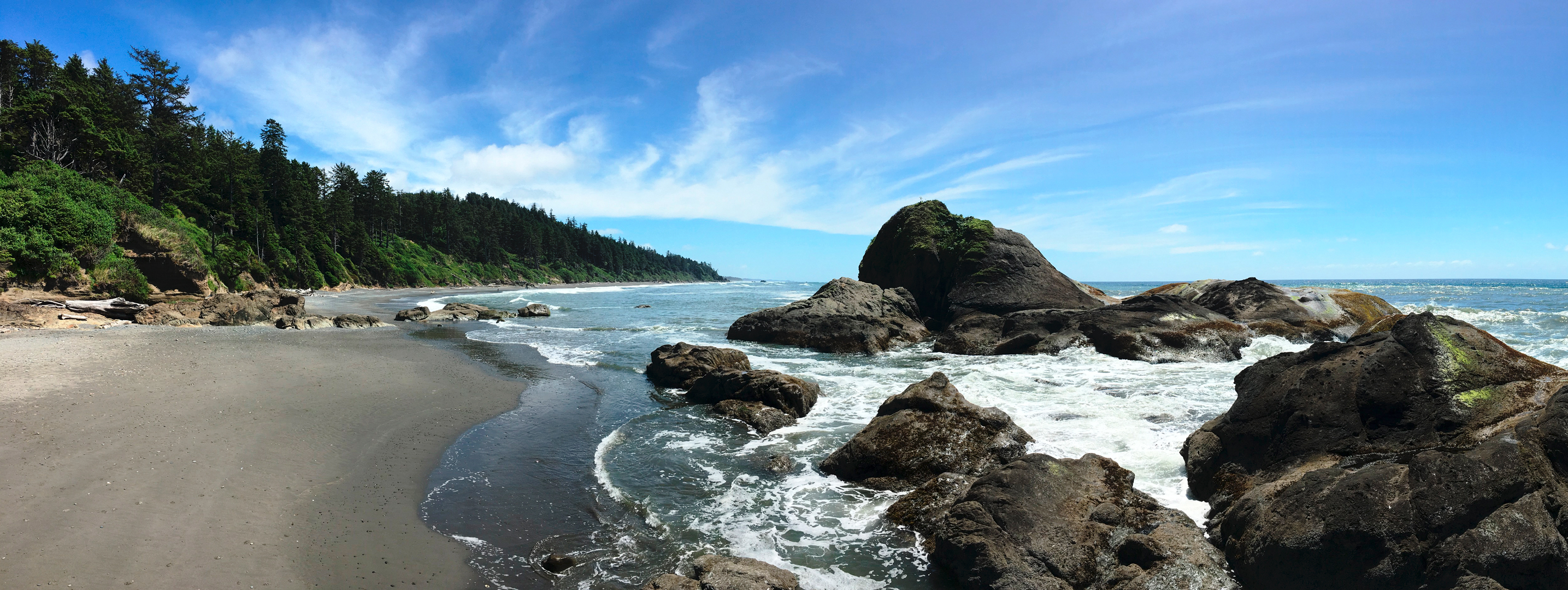Ocean management
Washington’s four counties bordering the Pacific Ocean — Clallam, Grays Harbor, Jefferson, and Pacific — encompass 331,000 acres of marine waters and 157 miles of open ocean coastline. These marine shoreline and open ocean resources:
- Offer a wealth of recreational and economic opportunities
- Help preserve cultural identities
- Support a diverse range of wildlife
- Provide multiple benefits to local communities and the broader state economy
It is important to understand, manage, and protect Washington’s ocean resources. We work closely with local and Tribal governments, state and federal agencies, academic and non-governmental entities, and private sector partners to solve critical issues facing these resources. We provide assistance to coastal communities, collaborate on ocean management issues, and lead and guide ocean planning and policy development for the state.
Ocean Resources Management Act
The state Ocean Resources Management Act (ORMA),and the accompanying rule guides the management of Washington’s ocean resources and provides policies and guidelines for state and local authorities when reviewing projects affecting Washington's coastal waters. The law is designed to protect Washington's valuable and fragile coastal waters, seabed, and shorelines while recognizing that ocean- and marine-based industries and activities such as fishing, aquaculture, tourism, recreation, and marine transportation are critical for Washington's future.
ORMA applies to coastal shorelines and state marine waters from Cape Flattery in Clallam County south to Cape Disappointment in Pacific County, extending seaward from the mean high tide line to the state boundary. The law gives special attention to the Columbia River, Grays Harbor and Willapa Bay estuaries. Activities occurring outside this area do not have to adhere to or be consistent with ORMA, unless it is subject to federal consistency review.
ORMA provides criteria for uses and activities that:
- Occur within ORMA’s jurisdiction
- Require federal, state, or local government permits or other approvals
- Will adversely impact renewable resources, marine life, fishing, aquaculture, recreation, navigation, air or water quality, or other existing ocean or coastal uses.
State rules and state laws provide further guidance on general ocean uses and those relating to specific ocean uses such as oil and gas development, transportation, and mining.
Federal consistency
Washington has regulatory jurisdiction over submerged state lands and marine waters that extend up to three nautical miles offshore, sometimes called the state’s coastal zone. However, under certain conditions and through the state’s Coastal Zone Management Program, Ecology can review federal activities occurring outside the state coastal zone using a process known as federal consistency.
Federal consistency applies to specific federal agency permits and activities that have foreseeable effects on resources and uses in Washington’s coastal zone. Visit our federal consistency page to learn more about this process.
Shoreline management
In Washington, cities and counties develop and adopt shoreline master programs, local land use policies and regulations that govern how shorelines will be used, developed and protected. Cities and counties along the Pacific Ocean coast must also incorporate the policies and guidelines required by the Ocean Resources Management Act and Washington’s marine spatial plan. We help local governments implement these requirements.
Working with Tribes
Tribes have a unique relationship with the state’s coastal and ocean resources, including their distinct legal standing and treaty-protected rights. Washington agencies work closely with Tribes to protect and sustainably manage these shared natural resources. Ecology collaborates and coordinates with Tribes through a government-to-government relationship to ensure effective stewardship. To learn more, visit our Tribal relations page.
Collaborative ocean management
Managing Washington’s ocean resources is complex and requires consultation, coordination, and collaboration with a wide range of entities at the local, Tribal, state, and federal level. We work with many organizations and forums, including:
- The Washington Coastal Marine Advisory Council is a Governor’s board that serves as a forum for ocean and coastal policy, planning, and management issues. The council’s 26 members represent diverse interests and entities and provides recommendations about how best to manage the state’s marine and coastal resources and uses. We provide staff support to the council.
- The State Ocean Caucus is an interagency forum for the governor's office and state agencies involved in ocean resource regulation and management. The caucus is focused on improving how Washington’s ocean resources are managed by identifying key issues and enhancing communication among agencies.
- The Intergovernmental Policy Council provides a forum for Tribal and state agencies to exchange information, coordinate policies, and develop recommendations for managing the Olympic Coast National Marine Sanctuary resources.
- The West Coast Ocean Alliance brings together federal agencies as well as state agencies and Tribal governments in Washington, Oregon and California to work on ocean health and policy issues along the U.S. West Coast. Alliance activities help guide Washington’s policy, planning, and management efforts. We also support the entity’s development of ocean health indicators and the West Coast Ocean Data Portal that enhances regional data access and quality.
Contact information
Casey Dennehy
Marine and ocean planner
casey.dennehy@ecy.wa.gov
360‐688-0142



